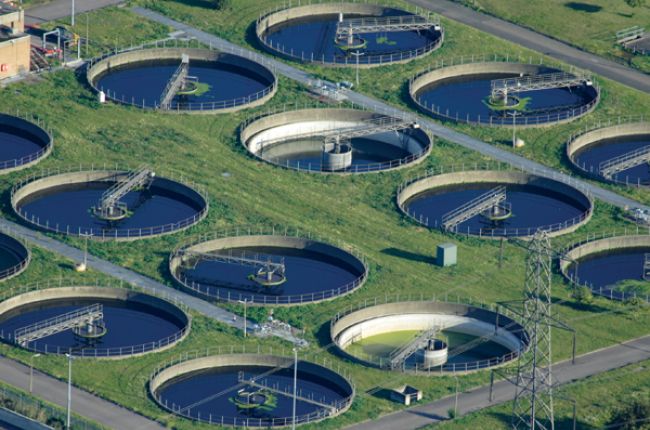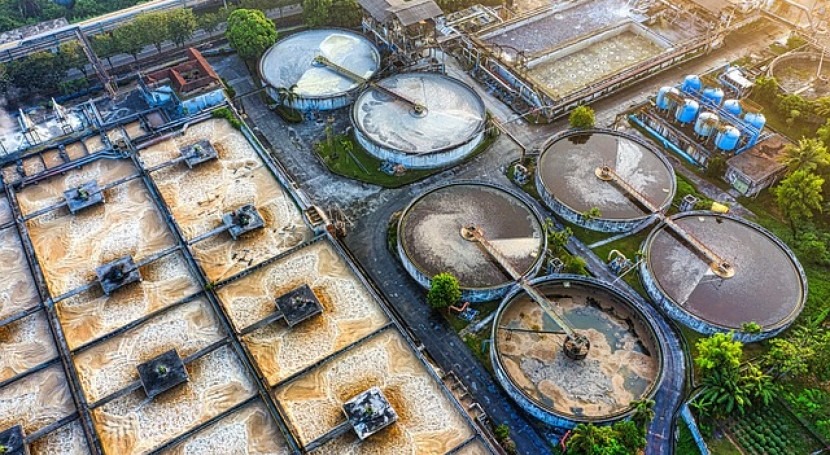Necessary Steps in Municipal Waste Water Treatment Plants
Necessary Steps in Municipal Waste Water Treatment Plants
Blog Article
Strategic Approaches to Enhance Drainage Treatment Efficiency and Reduce Environmental Impact
In the realm of drainage therapy, the quest for enhanced effectiveness and minimized ecological impact is a perpetual difficulty that requires calculated solutions. As society comes to grips with the essential to handle water resources sustainably, a nuanced approach comes to be necessary. The assimilation of innovative therapy technologies, energy-efficient processes, resource recovery strategies, improved nutrient elimination methods, and clever surveillance and control systems stands for a diverse structure for resolving these pushing problems. What lies at the core of this complex web of methods is the prospective to revolutionize the means we come close to waste water treatment, not just as a procedure of disposal, but as a valuable possibility for advancement and environmental stewardship.
Advanced Treatment Technologies
Cutting-edge membrane layer purification systems have revolutionized advanced wastewater therapy procedures, substantially boosting the elimination of contaminants. This technology has actually confirmed to be highly efficient in removing a large variety of pollutants, consisting of drugs, heavy steels, and natural compounds, which are commonly testing to eliminate with conventional treatment methods.
Additionally, membrane purification systems supply many advantages over standard treatment approaches. Furthermore, these systems are highly versatile and can be conveniently incorporated right into existing therapy plants or utilized as standalone units for decentralized applications.
Energy-Efficient Procedures
The combination of energy-efficient procedures in wastewater treatment systems is vital for optimizing source utilization and minimizing functional prices. One key technique to enhancing energy effectiveness in wastewater therapy is the application of advanced oygenation systems, such as great bubble diffusers or surface area aerators, which can boost oxygen transfer efficiency and decrease power usage.
Additionally, maximizing procedure control and automation via the usage of advanced sensors and checking systems can boost total power performance by adjusting operations in real-time based on real need and problems. Implementing energy audits and routinely checking power efficiency indications are important techniques to determine areas for enhancement and track energy-saving campaigns properly. On the whole, the fostering of energy-efficient processes in wastewater treatment not just profits the atmosphere however also contributes to lasting cost savings and operational sustainability.
Source Recuperation Methods
With a focus on enhancing resource application and sustainability in wastewater therapy systems, the application of resource recovery techniques becomes a crucial element in enhancing functional efficiency. Source healing strategies in wastewater therapy include the recognition and extraction of important resources from the waste stream, therefore turning what was when taken into consideration waste into an important property. By carrying out resource recuperation methods such as nutrient removal and healing, energy generation from raw material, and the production of reusable water, wastewater therapy plants can lessen environmental effect while making best use of performance.

Enhanced Nutrient Removal Strategies
Implementing sophisticated nutrient elimination strategies is important for enhancing the performance of wastewater treatment systems. One of the key techniques utilized for enhanced nutrient removal is the process of organic nutrient elimination (BNR), which entails check out this site the removal of nitrogen and phosphorus via biological procedures.

In enhancement to BNR, advanced therapy approaches such as membrane layer bioreactors (MBRs) and created marshes can additionally be employed to improve nutrient elimination effectiveness. By integrating these innovative nutrient elimination techniques into wastewater treatment towns, sectors and systems can properly lower nutrient pollution and protect the setting.
Smart Surveillance and Control Systems
Making use of cutting-edge technology, the assimilation of clever tracking and control systems changes the functional effectiveness of wastewater treatment centers. These systems integrate sophisticated sensors and information analytics to constantly keep track of key criteria such as pH degrees, turbidity, dissolved oxygen, and flow prices in real-time. By gathering and evaluating site web this information, drivers can acquire important insights into the performance of the treatment procedures, allowing positive changes to enhance therapy performance.
Smart tracking and control systems likewise support remote surveillance capabilities, permitting operators to accessibility real-time data and control functions from off-site areas. This remote availability enhances operational adaptability and responsiveness, enabling speedy interventions in situation of system malfunctions or changes in influent top quality. Additionally, the predictive upkeep capabilities of these systems assist avoid tools failings and reduce downtime, inevitably improving the general integrity of wastewater treatment operations (Waste Water Treatment).
Conclusion
In conclusion, critical approaches such as sophisticated treatment technologies, energy-efficient procedures, source recovery techniques, improved nutrient removal methods, and clever monitoring and control systems play a critical duty in enhancing wastewater treatment efficiency and decreasing environmental impact. By executing these methods, wastewater treatment plants can enhance their general efficiency, lower power intake, recoup beneficial sources, and ensure conformity with environmental policies. These techniques are crucial for reliable and sustainable wastewater management practices.

In conclusion, calculated methods such as innovative treatment technologies, energy-efficient procedures, resource healing strategies, improved nutrient elimination methods, and smart tracking and control systems play an important duty in enhancing wastewater therapy efficiency and minimizing ecological impact.
Report this page